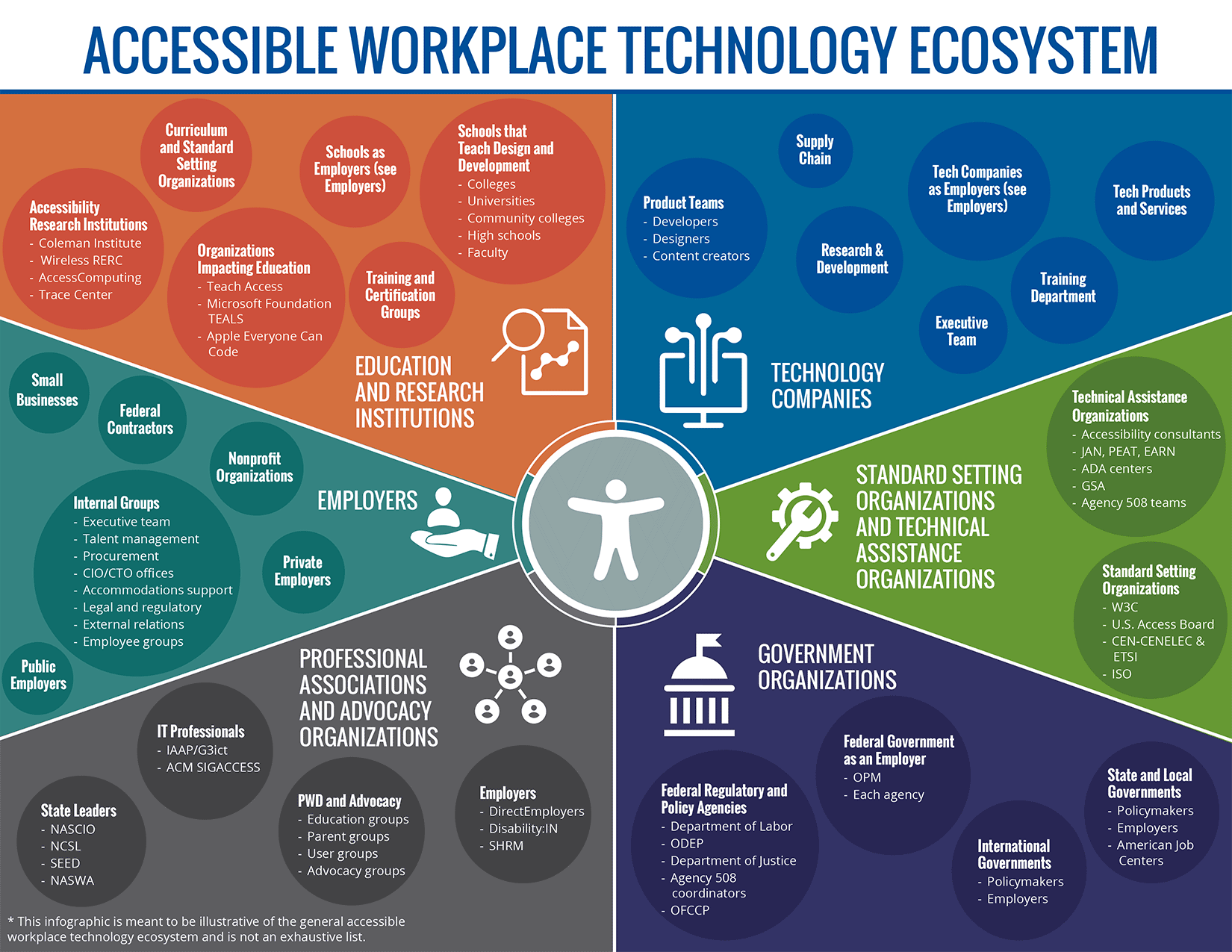Inclusive Hiring & Workplaces
As we work to improve accessibility, we can’t lose track of our purpose: to prevent and remove barriers for and with people with disabilities on the web. This isn’t about charity or pity. It’s about creating quality software that people with disabilities can use now, along with people who develop disabilities in the future.
There is a sad irony that many of the workplaces where we strive to do this work are inherently inaccessible. Software and hiring processes at the very start of the interviewing can keep people with disabilities out. And even if someone with a disability who needs accommodations does get hired, they will likely meet barriers, discrimination, and microaggressions on the job.
But there are also organizations and disability rights laws that are central to fostering accessible workplaces. PEAT (opens in a new tab), or the Partnership on Employment & Accessible Technology, has some relevant thoughts around this. In their infographic below (opens in a new tab), they explore the roles and responsibilities that different entities hold in the world of accessible workplace technology:

Ensure there aren’t discriminatory tools or practices keeping people with disabilities out
As allies for accessibility and disability rights, we should point this stuff out when we see it. Be diplomatic but up front about it. Although, I understand this could be well outside of the scope of your role.
Are there more accessible alternatives to the software procured for interviews, HR, performance reviews, etc.? If you or your company works on one of these products, can you make some noise internally about the cost of inaccessible software on people’s careers and livelihoods?
This isn’t just a statistics thing. Employment discrimination is unfortunately common for people with disabilities, and it has a profound impact on people. If we are in a position to help, we should try to do something about it.
A story about providing product accessibility feedback
When working at a past company, I noticed some software we used for performance reviews and HR had accessibility issues...they were easy to spot. I was able to provide feedback to two companies on accessibility of their software, so I did.
One of the companies was so eager to improve that they scheduled a call with me to digest the feedback and learn more. The other ignored my feedback and accessibility issues persist to this day, although I hear they are putting in more effort now.
All this to say, if you find accessibility feedback on a website or web application that could be pivotal to someone’s employment experience, speak up (and prioritize your feedback to the biggest blockers / most impactful issues).
It takes time and effort to provide free feedback, and frankly, time is money. But occasionally you might open the door to something being improved. And that is a wonderful thing.